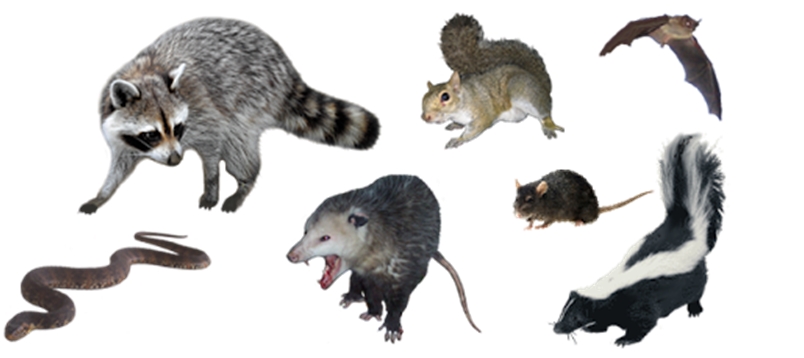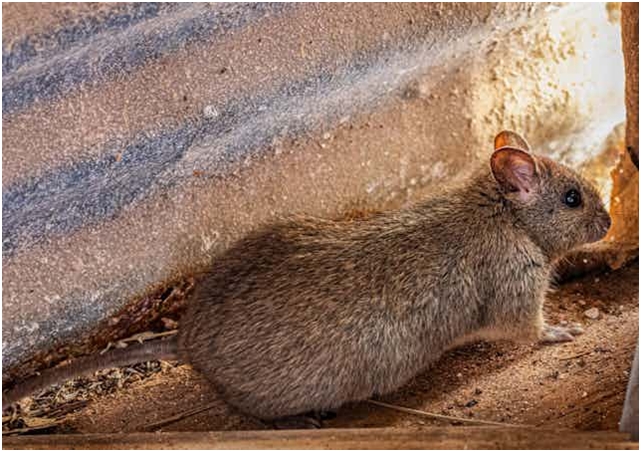Pest Control & Rodent Removal Tips for Prevention and Elimination

Rodent Removal | Baytown TX
Rodents are mammals with front teeth that never stop growing. About 40% of all mammals are rodents. They live everywhere except Antarctica and some islands. Some examples of rodents are mice, rats, squirrels, beavers, and guinea pigs. Rodents are found in many places, including trees, underground, and in water. They can leap, burrow, and swim. All rodents have two big teeth at the top and bottom of their mouths.
Rodents then engage in coprophagy, eating their own fecal pellets to allow nutrient absorption in the gut, resulting in the production of hard, dry fecal pellets. Horn et al. in 2013 found that rodents entirely lack the ability to vomit. In many species, the penis includes a bone called the baculum, and the testes can be located either in the abdomen or at the groin.
Rodents typically possess highly developed senses of smell, hearing, and vision. Nocturnal species often have larger eyes, and some are sensitive to ultraviolet light. Many rodent species feature long, sensitive whiskers, or vibrissae, used for touch or “whisking.” The movement of these whiskers is primarily controlled by the brain stem, which in turn is influenced by the cortex. However, research by Legg et al. in 1989 identified an alternative pathway between the cortex and whiskers via cerebellar circuits, while Hemelt & Keller in 2008 discovered involvement of the superior colliculus.
Some rodents are equipped with cheek pouches, sometimes lined with fur, which can be turned inside out for cleaning. In numerous species, the tongue cannot extend beyond the incisors. Rodents have highly efficient digestive systems, able to absorb approximately 80% of the energy from ingested food. When consuming cellulose, the food is initially softened in the stomach and then moved to the cecum, where bacteria break it down into carbohydrates.
Pest Identification – Characteristics
Rodents are characterized by their continuously growing, razor-sharp incisors. These teeth have thick enamel on the front and thinner enamel on the back. To prevent the teeth from overgrowing and piercing the skull, rodents must constantly wear them down. As they grind against each other, the softer dentine at the rear wears away, leaving a sharp, chisel-like enamel edge.
Most rodents possess up to 22 teeth, lacking canines or anterior premolars. A gap, called a diastema, exists between the incisors and cheek teeth in most species. This allows them to pull in their cheeks or lips to protect their mouth and throat from inedible debris, which is expelled from the sides of their mouth.
7 Tips for Raccoon Prevention and Safety

Well-known rodents include mice, rats, squirrels, prairie dogs, porcupines, beavers, guinea pigs, and hamsters Observing insects like moths can reveal that many are drawn to light, using moonlight for navigation. Conversely, pests such as cockroaches tend to shy away from light sources. Besides light, factors like availability of food, clutter, and easy entry points make your home inviting to pests.
Food
Being mindful of the foods that can lure pests is crucial:
– Ants are attracted to sweets, oils, fats, and eggs.
– Fruit flies are drawn to decaying fruits and vegetables.
– House flies are in search of liquids, while fleas find nourishment on your pets.
– Rodents often raid trash bins for anything from grains and seeds to fruit and chocolate.
– Silverfish munch on paper, clothing, glue, and common food items like flour and oats.
– Cockroaches are not picky; they consume a wide range of items, including cheese, meat, grease, leather, glue, and even book pages.
To deter rodents pests attracted by food, store food in airtight containers and promptly put it away. Keep food-related trash contained within the kitchen rather than distributing it throughout the home. Make it a habit to take out the trash frequently and sanitize your trash cans regularly to prevent pest attraction.
Exterior Preventative Rodent & Pest Control Measures
In addition to regular lawn mowing, leaf removal, and proper woodpile management, there are several strategies you can implement around your home to prevent pests from establishing themselves on your property or finding their way inside. Here are some effective measures:
Seal Gaps in Trim and Siding
Inspect the areas between your trim and siding for any gaps and fill them using acrylic latex caulk. Remove any excess caulk with a damp cloth, and smooth the caulk bead with a wet finger for a clean finish.
Fill Siding Gaps with Mesh
Prevent pest entry through foundation gaps and siding joints by addressing hairline cracks and smaller openings using urethane caulk or an epoxy concrete repair kit, which serve as durable barriers. To identify cracks, you might need a mirror for areas beneath siding joints. Upon discovering gaps, insert copper mesh to effectively deter pests. Use a screwdriver to firmly pack the mesh, leaving about half an inch for expanding foam sealant to ensure a comprehensive seal.
Opt for LED Outdoor Lighting
Choosing the right lighting can significantly impact pest control. LED lights with a warm color temperature are ideal, as they attract fewer insects compared to traditional bulbs. Additionally, they are 90% more energy-efficient. Insects are predominantly attracted to yellow lights that emit high heat levels. Positioning light sources closer to the ground is advantageous, as bugs are drawn more to lights encountered mid-flight than when they are on the ground. Utilizing multiple light sources can also diffuse the light, preventing insects from being attracted to one bright focal point, thereby avoiding confusion caused by artificial light that interferes with their natural navigation.
Seal Soffit Gaps with Expanding Foam
The soffit, the visible part of a roof or overhang, can develop gaps where it meets your home’s wall. These gaps can serve as entry points and nesting areas for pests. Insects like wasps may build nests in these spaces, causing issues as they hide and later swarm around your family and pets. Birds may also nest there. To prevent this, fill the gaps with expanding foam. Once the foam dries, trim any excess with a utility knife.
Install Weatherstripping on Doors and Windows
Weatherstripping seals gaps around windows, doors, and basement sash windows. Before applying, clean surfaces to ensure the adhesive sticks properly. This step not only prevents pest entry but also helps reduce energy bills by keeping warm air inside during winter and cool air from your HVAC system inside during summer.
Relocate Wood and Mulch Away from the Foundation
Woodpiles can attract termites and carpenter ants while moisture lures pests like spiders and centipedes. To reduce risk, plant garden beds and shrubs away from your foundation, minimizing damp, pest-friendly environments near your home. Regularly turn mulch close to your house to reduce moisture, and rake damp soil and mulch away from wooden and basement window frames.
Remove Standing Water
Standing water provides breeding grounds for mosquitoes. Address areas in your yard where water pools after rain by ensuring proper drainage to direct water away from your home. Refresh water in birdbaths or fountains every couple of weeks, and maintain your swimming pool to prevent it from becoming a mosquito haven.
Interior Preventative Pest Control Measures
Even with a secured exterior, some pests may still infiltrate your home. To deter them, consider the following approaches:
Securely Store Pet Food
Keep pet food in sealed plastic containers or metal trash cans with lids. Metal is ideal since mice can’t climb it easily. Avoid leaving pet food outdoors to prevent attracting pests like raccoons.
Repair Leaky Faucets
Eliminate convenient water sources by fixing any dripping faucets and leaky sink traps. Remember, damp towels and sponges can also attract pests.
Manage Indoor Humidity
Spiders, cockroaches, and other pests thrive in humid environments. Use a dehumidifier to maintain home humidity between 40% and 45%, making it less appealing to these creatures.
Minimize Clutter
Reducing clutter eliminates potential hiding spots for pests who prefer not to be noticed.
Maintain Clean Eating Areas
Ensure kitchen counters, dining tables, and other eating spaces are free of crumbs, grease, and other food particles that might attract pests. For pet owners, store pet food in airtight containers.
Safety Tips for DIY Pest Control
When undertaking a DIY pest control project, it’s essential to prioritize safety. Here are some key guidelines to follow:
- Natural Remedies: Even if you choose natural pest control methods, ensure they are safe for children and pets. Some essential oils, for example, can be harmful. When in doubt, avoid using them.
- Pesticide Use: Always use pesticides as directed. Follow the product label instructions carefully to avoid overuse, which could pose health risks to your family and pets.
- Appropriate Application: Never apply outdoor pesticides indoors. Outdoor formulations can remain toxic longer, and using them inside could create hazardous conditions.
- Safe Storage: Store pesticides only in their original containers and never repurpose these containers for other uses. Keep all toxic materials out of the reach of children at all times.
Services
Conclusion
Preventing pest issues is your best strategy. Make efforts to seal your home properly, eliminate food and clutter that attract pests, and maintain your yard. These preventive measures can significantly reduce the likelihood of pest invasions.
If prevention isn’t enough, you have options. Responsibly using chemical treatments or trying recommended natural methods can help. However, if you encounter persistent infestations, it’s best to consult a reputable local pest control service. Research companies in your area for ones with excellent reviews to effectively address your pest issues.
Free Consultation
* Indicates required questions

Click here to leave us a review on Google.


